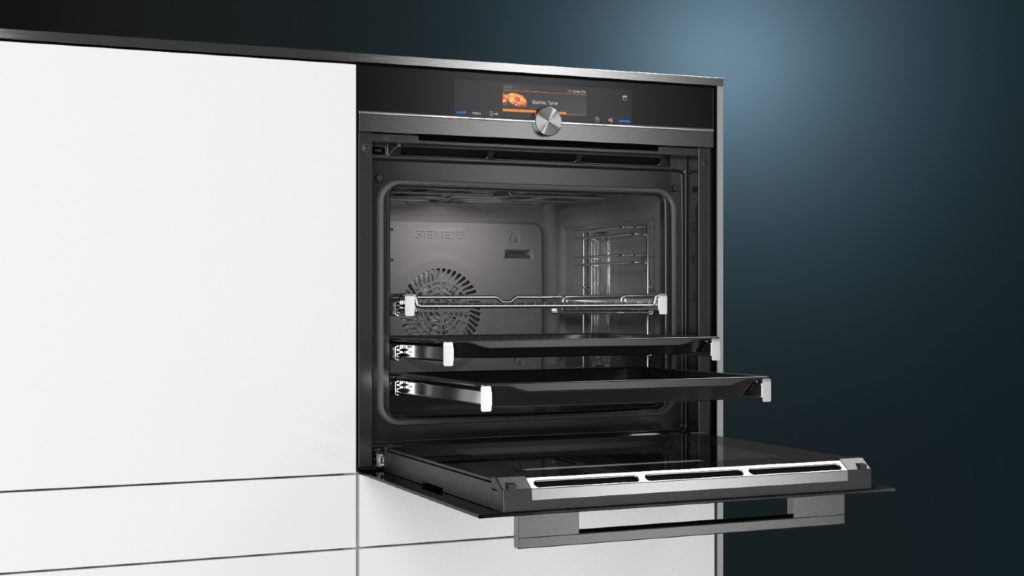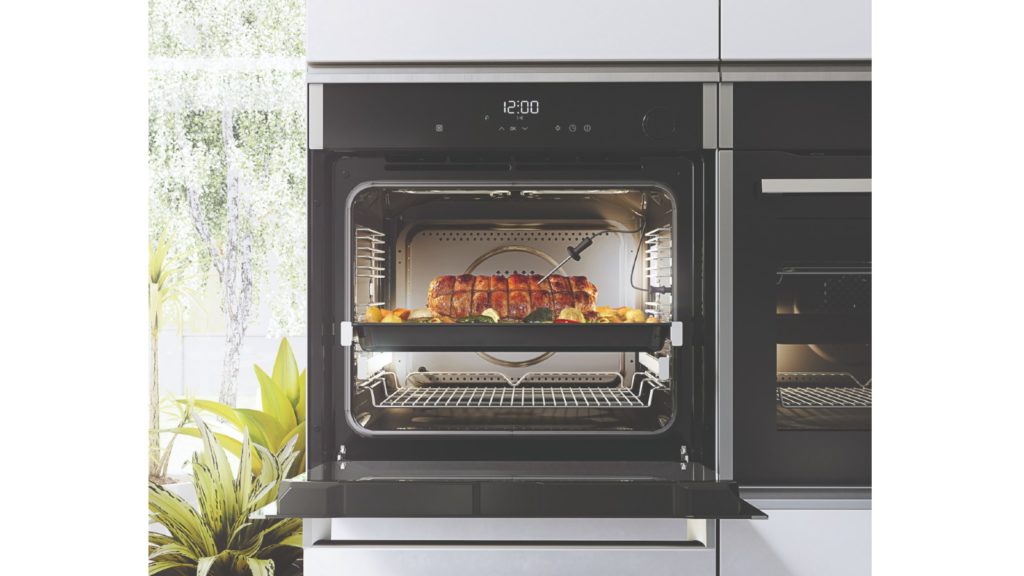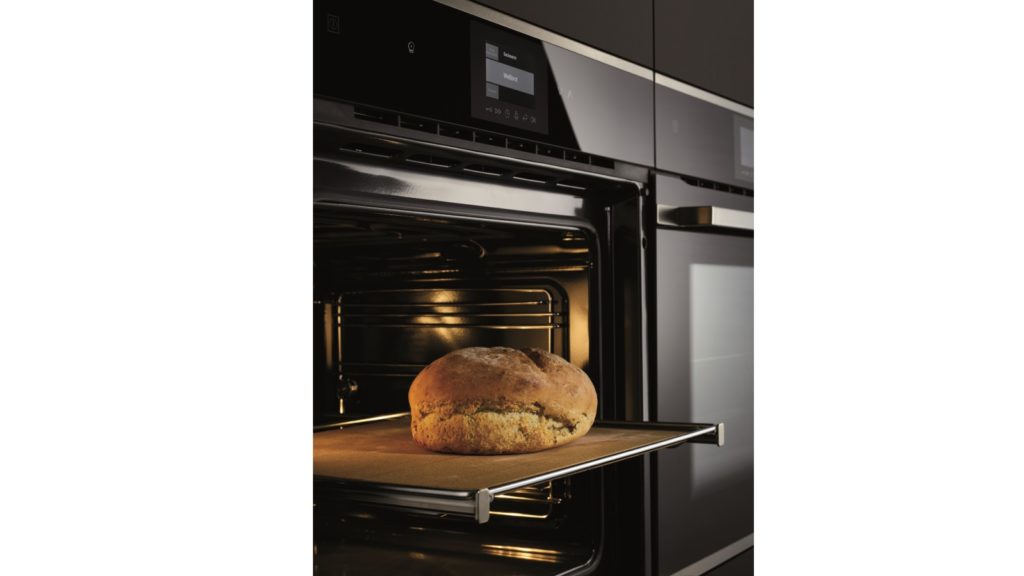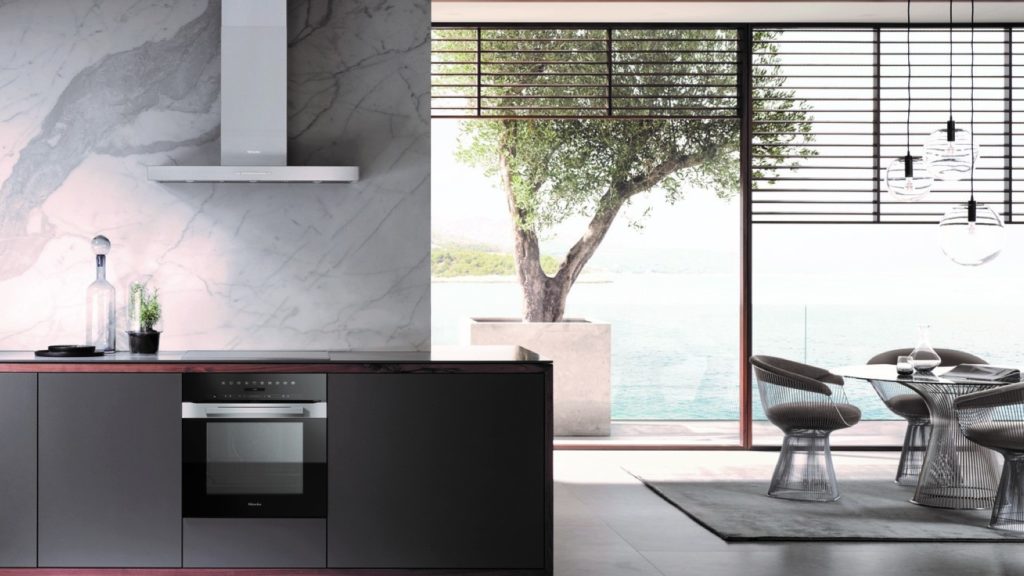Connectivity may make cooking easier and more enjoyable but ovens with automatic recipes and self-clean programmes can satisfy clients with smaller budgets
If the kitchen is the heart of the home, then the oven is the pulse. It’s central to the entire purpose of the space, which is the creation of meals.

The iQ700 HS858KXB6 built-in oven from Siemens has a 71-litre capacity and features a steam function and voice control, by connecting to Amazon Alexa via the Home Connect app
With the Coronavirus pandemic seeing people spend more time at home than ever before and the subsequent lockdown restrictions forcing restaurants to close, there has been an increased focus on cooking.
Sponsored Video
Marketing manager of KitchenEx Laura Gardiner comments: “Since the pandemic, more people are cooking together.
“Instead of it being a necessity, people have the time to learn new techniques and indulge in new dishes.
“This time last year, according to research by the SWNS group more than a fifth of Brits were cooking every meal from scratch – compared to just one in eight before the lockdown.”
It means the focus is now on ovens which can make the process easier and more enjoyable.
Get connected
At the top of the tree are connected appliances, which when used in combination with dedicated apps not only guide consumers to create dishes but constantly monitor and adapt the cooking process – even remotely.
Caple introduced connected appliances using its Home Connect App, which provided multi-stage cooking at kbb Birmingham 2020.
And Siemens unveiled a connected built-in oven with steam (iQ700 HS858KXB6) at IFA, which works with the HomeConnect app to provide recipes, automatically cook dishes and can be operated by voice control to open the door.
Cooking product manager at Miele GB Cem Kal says there is a 50:50 split of consumers who want connectivity comments: “We have seen around a 50% split between consumers who want the ability to have connected appliances vs those who do not.”
But the reality is connected ovens are still a high-end product for the most affluent of customers
Demanding more
Convenience, then, doesn’t just focus on connectivity. It can also be a matter of capacity, with consumers demanding larger cavity single ovens.

At the top-end of the CDA built-in oven portfolio is the SL670 which has 13 functions, plus steam cooking, and pyrolytyic technology. The oven also comes with a temperature probe
Consumer marketing manager at CDA Carrie Bell comments: “Nearly half of the ovens now on the market have a larger capacity”, adding “almost all CDA ovens have a larger cavity, making it possible to cook larger meals and to benefit from batch cooking.”
And consumers are looking for models which can multi-task, offering a wider variety of cooking functions to help create authentic dishes.
Fisher & Paykel recently introduced its Touchscreen oven, which enables users to cook by function, food type or recipe, with a food probe to monitor cooking results.
And Cem Kal of Miele GB points out: “We are seeing a growth in consumers opting for helpful features such as MoisturePlus and ovens with a food probe.
“The food probe monitors the core temperature when roasting and lets users know the remaining cooking time. As a result, there’s no need to worry about meat or poultry being undercooked.”
Simplifying complexity
Although ovens have been created to perform ever more complex functions, technology for controls has been focused on interfaces to make controls easier to understand and operate the programmes. Enter the touch screen.

The Touchscreen oven from Fisher & Paykel provides a guided cooking experience, allowing users to Cook by Function, Cook by Food Type or Cook by Recipe. Cook by Function provides a choice of 16 cooking options
Laura Gardiner of KitchenEx explains: “With the on-going increase of touch screen mobile phone, a TFT screen on an oven is almost the norm. Using a knob on an oven is a more ‘traditional’ method of control.
“TFT control screens not only improve the design of the appliance but they also make functions easier to manage, Ilve’s high definition screens improve the functionality of products whilst offering easy-to-use features.”

The Kuppersbusch K-Series.5 B6550.0 Black Oven has a 70-litre capacity and offers 22 functions, with 40 automatic programmes. It boasts a TFT-IPT 3.9” colour screen with touch sensor controls
Managing director of Kuppersbusch Sales UK Bodie Kelay adds TFT also offers the opportunity to encourage consumers to trade up: “Kuppersbusch offers the next generation with TFT-IPS colour screens, offering retailers an additional USP to sell the latest cooking innovations.
“The dual technology offers a clearer visual display for precision control, an ergonomic 180° view with no background reflection to deliver an effortless user experience.”
Keeping clean
But for the ultimate in convenience, making the oven easier and more enjoyable to use, has to be a self-cleaning oven function.

The PureLine H 7262 BP built-in oven from Miele offers a DirectSensor S clear text display, pyrolytic cleaning, automatic programmes and a wired food probe
Recent research by estate agent Parkers Properties found the question “how to clean an oven” resulted in 8,100 monthly searches on Google and as the most hated household chore, according to a survey by Tombola, it’s easy to see how pyrolytic is also growing in importance.
And although widely understood by the trade, there is still plenty of consumer education required to encourage consumers to trade up, as Carrie Bell of CDA points out: “Everyone hates oven cleaning. Pyro clean is, of course, the ultimate but currently pyroclean takes less than 10% of oven sales across the market – though this is growing as prices fall and the technology becomes more available.”
While the way consumers will live their lives post-pandemic will still be relatively uncertain, designers can be sure there will be continued interest in cooking and baking at home.
Carrie Bell states: “There is a theory that now people have started cooking more at home and seen how much money they can save, they will continue to do it.”
Whether or not the at-home kitchen replaces the trend for eating out, the need for an oven to be easy and enjoyable to use will most definitely remain.



